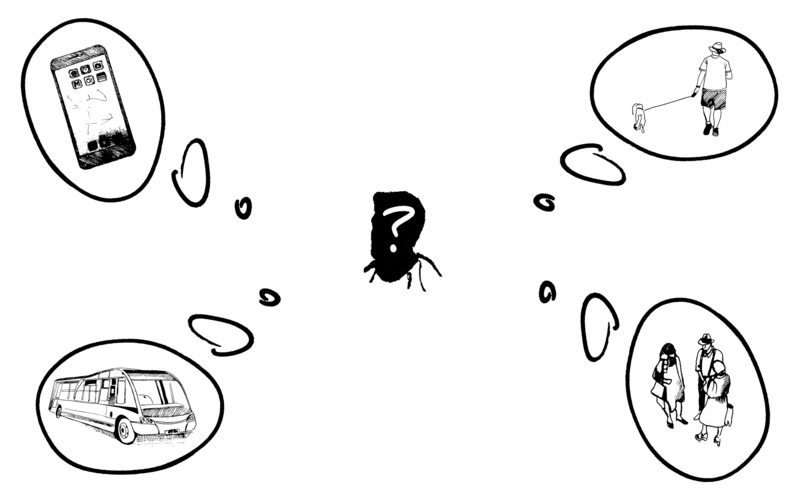LC 00816: verschil tussen versies
Geen bewerkingssamenvatting |
Geen bewerkingssamenvatting |
||
| Regel 8: | Regel 8: | ||
To manage the priorities of 14 project partners in Belgium, France, the Netherlands and the United Kingdom, HAIRE built a quite expansive Guided Conversation. Not all Guided Conversations have to have so many components! In the sections below, the key considerations for designing a Guided Conversation are covered. Materials from HAIRE will be presented as an example of how these considerations were put into practice during the project. These materials are free to use and adapt for individuals, groups and organisations who want to design their own Guided Conversations. | To manage the priorities of 14 project partners in Belgium, France, the Netherlands and the United Kingdom, HAIRE built a quite expansive Guided Conversation. Not all Guided Conversations have to have so many components! In the sections below, the key considerations for designing a Guided Conversation are covered. Materials from HAIRE will be presented as an example of how these considerations were put into practice during the project. These materials are free to use and adapt for individuals, groups and organisations who want to design their own Guided Conversations. | ||
'''Step 1: Identify your big theme and any influences that you wish to understand in relation to this theme.''' | '''Step 1: Identify your big theme and any influences that you wish to understand in relation to this theme.''' | ||
| Regel 15: | Regel 16: | ||
This question helped to guide the development of creative conversational prompts to support participants in sharing their opinions and experiences. | This question helped to guide the development of creative conversational prompts to support participants in sharing their opinions and experiences. | ||
{{Light Context | {{Light Context | ||
|Supercontext=LC_00810 | |Supercontext=LC_00810 | ||
Versie van 16 feb 2023 13:21
The Guided Conversation is HAIRE’s adaptable tool that aims to understand how a person’s life experiences, local area and social connections (to other people, organisations and activities) influence their wellbeing.

HAIRE's Guided Conversation
In HAIRE, the target audience for conversations was older adults in rural locations across Europe. Additionally, the project was interested in how issues relating to wellbeing were being experienced in these specific locations.
Overall, the conversation’s purpose was to reflect on issues and identify what could support the participating individuals. Discussions involved what individuals could do themselves, as well as thinking about how they could be supported and by whom.
To manage the priorities of 14 project partners in Belgium, France, the Netherlands and the United Kingdom, HAIRE built a quite expansive Guided Conversation. Not all Guided Conversations have to have so many components! In the sections below, the key considerations for designing a Guided Conversation are covered. Materials from HAIRE will be presented as an example of how these considerations were put into practice during the project. These materials are free to use and adapt for individuals, groups and organisations who want to design their own Guided Conversations.
Step 1: Identify your big theme and any influences that you wish to understand in relation to this theme.
Once a clear purpose for a Guided Conversation is determined, you can begin to think about your conversation's opening question. HAIRE was interested in wellbeing and the influence of someone's local area and living spaces on wellbeing. To reflect the big theme that the project was interested in, HAIRE's Guided Conversations started with the following question:
How do you feel about living here?
This question helped to guide the development of creative conversational prompts to support participants in sharing their opinions and experiences.
Referenties
- HAIRE Action Plan Letter Laakdal, Laakdal OCMW, Laakdal OCMW, 23 februari 2023.
- ONS Loneliness Survey Source, Office for National Statistics, United Kingdom, Office for National Statistics, United Kingdom, 16 februari 2023.
- Guided Conversation Tips and Training, University of Exeter, University of Exeter, 23 februari 2023.
- HAIRE Conducting Guided Conversations Template, University of Exeter, University of Exeter, 23 februari 2023.
- HAIRE Guided Conversation Participant Template, University of Exeter, University of Exeter, 23 februari 2023.
- HAIRE Transferability, University of Exeter, University of Exeter, 30 maart 2023.
- WEMWBS Survey Source, Warwick University, United Kingdom, Warwick University, United Kingdom, 16 februari 2023.
